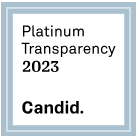#MythbusterMonday - March 2018 Myths Busted!
/We begin each week using our online voice to debunk myths about hunger. Our #MythbusterMonday social media series dispels misinformation and stigma commonly associated with food assistance programs like CalFresh/SNAP and youth meals and the people who rely on them to help put food on the table.
What hunger myths have you heard? Join us in sharing the truth about hunger each Monday using the hashtag #MythbusterMonday.
In March, we busted the following hunger myths:
March 5
The first Monday of the month we take a look back at the myths busted the previous month. Check out the myths we busted in February. Click here.
March 12
#MythbusterMonday "You must have a place to cook and store food to get SNAP/CalFresh benefits." False! You can’t be turned down for SNAP/CalFresh benefits because you don’t have a kitchen or a place to cook. Click here to read more myths and facts about SNAP/CalFresh for homeless persons from the U.S. Department of Agriculture.
March 19
#MythbusterMonday "SNAP recipients are lazy and don't work." False! According to The Hamilton Project "The vast majority of food-insecure households with children are working households: over 85 percent of households with children reporting food insecurity in 2014 also reported at least one adult who earned an income in 2014. Among every type of household reporting food insecurity—i.e., households headed by married couples, single mothers, or single fathers—at least 75 percent of households had an earner during the year they experienced food insecurity. Nonetheless, the income generated by work over the year was not sufficient to protect those working families from food insecurity. Click on the link to read more fact about food insecurity and SNAP.
March 26
#MythbusterMonday "Our youth organization can't provide meals because we don’t have a kitchen or space to prepare food." False! Many nonprofits partner with a sponsor like a school or food bank to prepare the food or work with a vendor to serve room temperature, healthy options that don’t require a kitchen for preparation or significant refrigeration space. Interested in starting or expanding youth meals in your area? Visit our Hunger Free Kids webpage to learn more.








